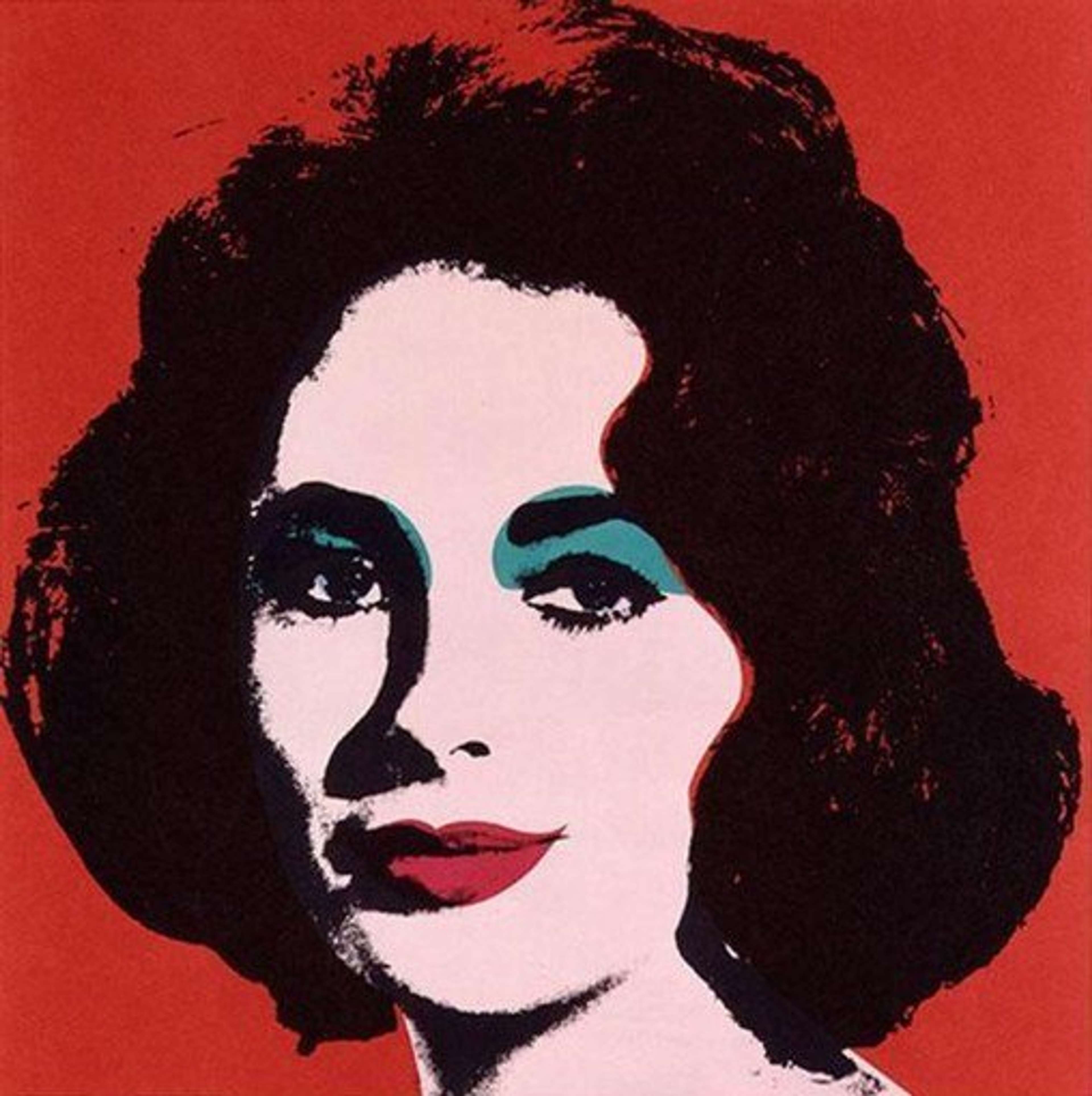 Kimiko (F. & S II. 237) © Andy Warhol 1981
Kimiko (F. & S II. 237) © Andy Warhol 1981
Interested in buying or selling
Andy Warhol?

Andy Warhol
487 works
The Kimiko Powers screen print series was created by Andy Warhol after he was commissioned by her husband, John, in 1971. The Pop Art collector couple continued to patronise Warhol throughout the 1970s, paying their way into Warhol's oeuvre.
The series depicts Kimiko Powers in a traditional Japanese kimono.
 Image © MoMA / Kimiko © Andy Warhol 1981
Image © MoMA / Kimiko © Andy Warhol 1981In this commissioned screen print series, Warhol depicted Kimiko Powers - a major collector of Pop Art in the second half of the 20th century. Donning traditional Japanese dress, Powers gazes over her shoulder towards the viewer like a classic beauty symbol. Warhol depicted the wealthy patron with particular attentiveness, heightening her elegance with a considered application of colour.
The series was commissioned by Kimiko's husband, John.
 Grace Kelly (F. & S. II.305) © Andy Warhol 1984
Grace Kelly (F. & S. II.305) © Andy Warhol 1984Warhol was originally commissioned by John Powers in 1971 to depict his wife in Warhol's signature Pop style. Despite Kimiko herself not being a ”celebrity”, Warhol treated her portrait with the same attentiveness as his icon portraits of the likes of Grace Kelly and Ingrid Bergman. Throughout the 1970s, Warhol famously charged some $25,000 for a portrait, and an additional $15,000 for each additional panel. This series, like Warhol's other commissioned portraits, therefore makes clear the indelible link between wealth and fame.
The series speaks to Warhol's belief that everybody gets their 15 minutes of fame.
 Image © Lévy Gorvy / Kimiko Powers © Andy Warhol 1981
Image © Lévy Gorvy / Kimiko Powers © Andy Warhol 1981By paying their way into Warhol's oeuvre, John and Kimiko Powers immortalised themselves in a covetable print portfolio. Warhol himself had a strong belief that everybody got their 15 minutes of fame, and he was more than happy to facilitate this for the Powers' - so long as the price was right.
Kimiko and John Powers were avid Pop Art collectors.
 Image © Artsy / Faces - Kimiko Powers © Andy Warhol c.1980
Image © Artsy / Faces - Kimiko Powers © Andy Warhol c.1980Throughout their lifetimes, both John and Kimiko Powers amassed one of the largest Japanese and Pop Art collections in the United States. Given their clear fascination with Pop Art, and their combined wealth, it is hardly surprising that the pair should wish to commission Warhol themselves. This series therefore speaks to the enduring significance of patronage in the history of art, and the relationship between money and art.
Warhol painted Powers on multiple occasions.
 Image © Mutual Art / Kimiko Powers © Andy Warhol 1981
Image © Mutual Art / Kimiko Powers © Andy Warhol 1981Though Warhol was originally commissioned by John Powers in 1971, this print series wasn't executed until a decade later. Warhol continued to photograph Kimiko throughout the 1980s, speaking to the relationship formed between the Powers' and Warhol, and Warhol's commitment to Kimiko's portrait.
The series began with a Polaroid photoshoot of Powers.
 Mick Jagger (F. & S. II.138) © Andy Warhol 1975
Mick Jagger (F. & S. II.138) © Andy Warhol 1975Like many of Warhol's portraits, whether they be commissions or of celebrity friends like Mick Jagger, the Kimiko Powers series began with a Polaroid photoshoot. Snapped by Warhol himself, this process gave the artist the opportunity to engage with his sitters directly, and created a selection of portraits to work from. Kimiko remembered this sitting process in a 2001 interview: “And he said to me ‘turn your face up. Turn your face to the side. Oh, it’s beautiful… oh gee that’s great.’ He took Polaroids, one after another. Afterwards when we were finished, he put them all over the floor and asked, ‘Which one do you like?’ I said, ‘You’re an artist, you decide.’”
The Kimiko Powers series recalls Warhol's early celebrity portraiture.
 Marilyn (F. & S. II.23) © Andy Warhol 1967
Marilyn (F. & S. II.23) © Andy Warhol 1967In his considered application of colour to certain features of Kimiko's person, this portrait portfolio recalls a lot of Warhol's earlier work. Certain iterations of the print recall the Marilyn Monroe and Liz Taylor series executed in the 1960s. Though Kimiko was a paying customer, he was clearly fascinated with her beauty and depicted her to resemble these Hollywood icons.
Prints from the series were sold to raise funds for a visual arts programme.
 Kimiko (F. & S II. 237) © Andy Warhol 1981
Kimiko (F. & S II. 237) © Andy Warhol 1981Though John Powers originally commissioned Warhol for a portrait of his wife in 1971, he returned to Warhol in 1981 to print the portrait for a fundraiser. The edition of 250 screen prints was published and sold to raise money for a visual arts programme sponsoring artists and exhibitions to which John Powers was affiliated. The series is a testament to Warhol's commitment to serigraphy, and the commercial appeal of his work.
The series transformed Powers into a Warholian icon.
 Liz © Andy Warhol 1964
Liz © Andy Warhol 1964Though many wouldn't immediately recognised the name ”Kimiko Powers”, the very fact that she was portrayed by Warhol makes us assume celebrity status. In bold block colours, Kimiko appears like the Warholian icons of the 1960s.
Warhol used a Kimiko Powers print to advertise an exhibition.
 Image © Forum Auctions / Kimiko Powers Poster © Andy Warhol 1981
Image © Forum Auctions / Kimiko Powers Poster © Andy Warhol 1981John Powers' original commission was completed in 1972. The eye-catching portrait was subsequently used by Warhol to advertise his show at Colorado State University. Only one of 250 posters was signed by Warhol in pencil beneath Kimiko's portrait.
